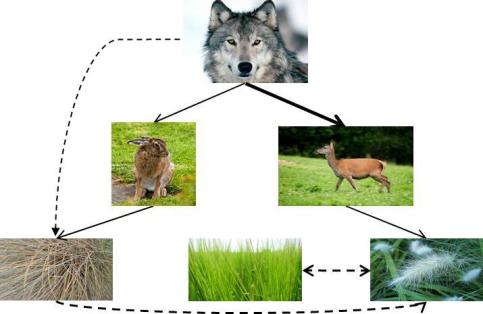Method
Theorethical modeling
This kind of studies are hard to conduct since there are so little empirical data, hence the use of theorethical modeling.
The method used was mathematical modeling based on Lokta-Volterra equations with a functional response of type II performed in the program Matlab.
The analyses based on Christianou & Ebenmans (2006) deterministic food-web models which they used for reintroducing species into communities. The model community that was generated is a triangular shaped deterministic food-web with 12 species divided into three trophic levels; five basal species (primary producers), four intermediate species (links both up and down in the food-web) and three top predator species (only links down in the food-web).
Each species was removed from the food-web one at a time. When the species was removed from the ecosystem its attributes (mortality- or growth-rate, depending on if the species is a consumer or a producer) was changed with 40% and 75%, as if they were kept in captivity during their absence from the ecosystem. The mortality/growth-rate was used since it is a good measure of several changes in a captive bred species, for example, genetic depression, weakened predator skills and infertility all affect these rates. Different mortality-/growth-rates were used due to the fact that captivity alters the mortality of species in different extent and can also be illustrated as a shorter/ longer time spent in captivity. As a control-sample the species was removed and reintroduced without any change in its mortality/growth-rates (0% change). When the species was removed and then reintroduced to the food-web, the effects of this was assessed and statistically analyzed.
Example of how a food web could look:

Responsible for this page:
Director of undergraduate studies Biology
Last updated:
05/26/11
